Kokkoku: Moment by Moment Review
One story that I always hear from people who live, or have lived in Japan, is that they have survived an attempt from a religious cult to indoctrinate them. These attempts seem incredibly common in Japan, so it’s a surprise they aren’t used more often in anime; yet here we have a series which combines a religious cult with ideas on time travel and immortality.
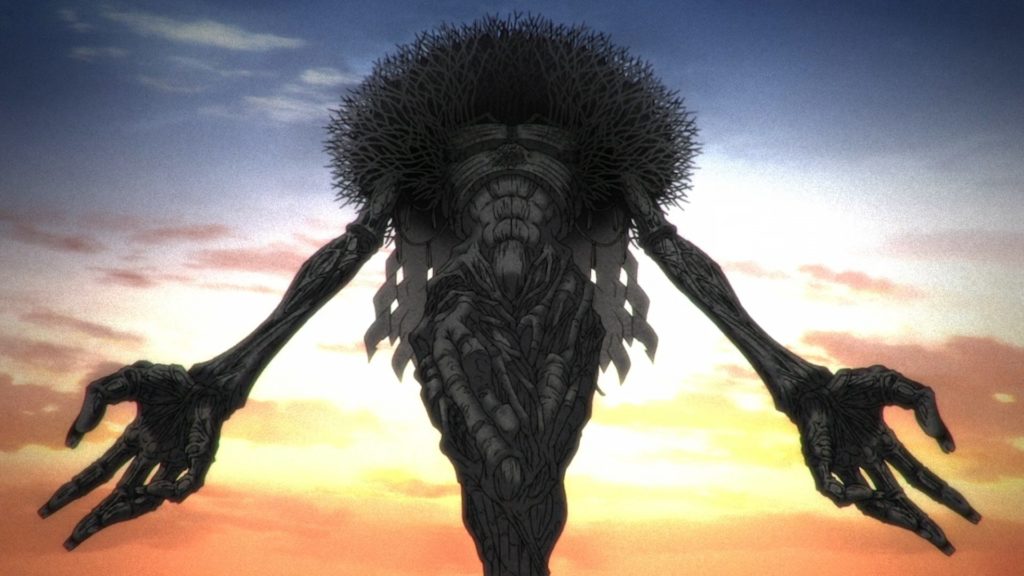
Kokkoku: Moment by Moment tells the story of Juri Yukawa and her family’s run-in with the Genuine Love Society, a religious cult attached to a miraculous stone which, when fed someone’s blood, can stop time for them and anyone else touching the stone. With her family being pretty close to rock bottom, her father just having lost his job, her brother being a NEET and her sister being a rushed-off-her-feet single mother trying to support her son, Makoto, Juri is shocked when her brother and nephew are kidnapped and held to a 5-million-yen ransom in an abandoned apartment block. With only 30 minutes to save them and no car available, things look hopeless – until their grandfather pulls out this mystical stone and stops time, pulling Juri, her father Takafumi, and himself into the world of Stasis. While they think it will be an easy rescue, they end up falling into a trap set up for them by the Genuine Love Society; where their leader, Junji Sagawa, plans to steal the stone and utilise the power of Stasis to fulfil his dream of achieving immortality.
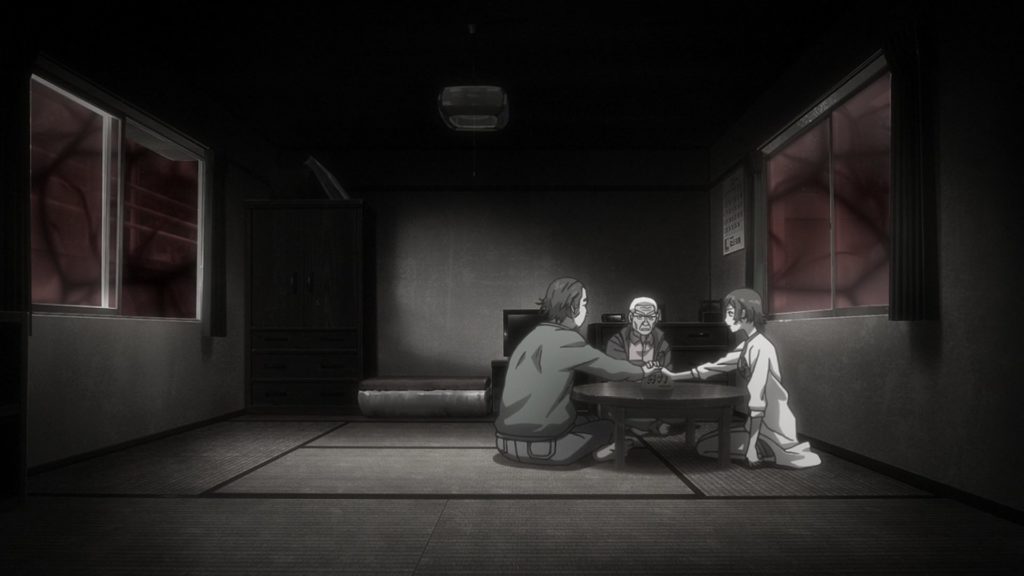
This is certainly one bizarre plot that combines a range of time-related science fiction concepts with a cat-and-mouse drama that sees Juri and her grandfather trying to rescue her family. All the while, the mystery around what Stasis is, how it works and how it came to be unravels in the background. While it has some fascinating concepts, I often found it to be a bit messy and confusing in its execution, showing a lack of focus and jumping around between its different plot threads a lot. As a result, it gave me the impression that it had a lot of things to tell, but not enough time to tell them.
It front-loaded a lot of its core concepts into the first episode, where it had to handle introducing all of the main characters and the villains, as well as setting up several different elements of Stasis. This left it with a few episodes that were particularly light on content; for example, where the two groups are chasing each other around town in Episodes 3 and 4, where instead they could have been used to space out some of the more detailed explorations of the science fiction elements.
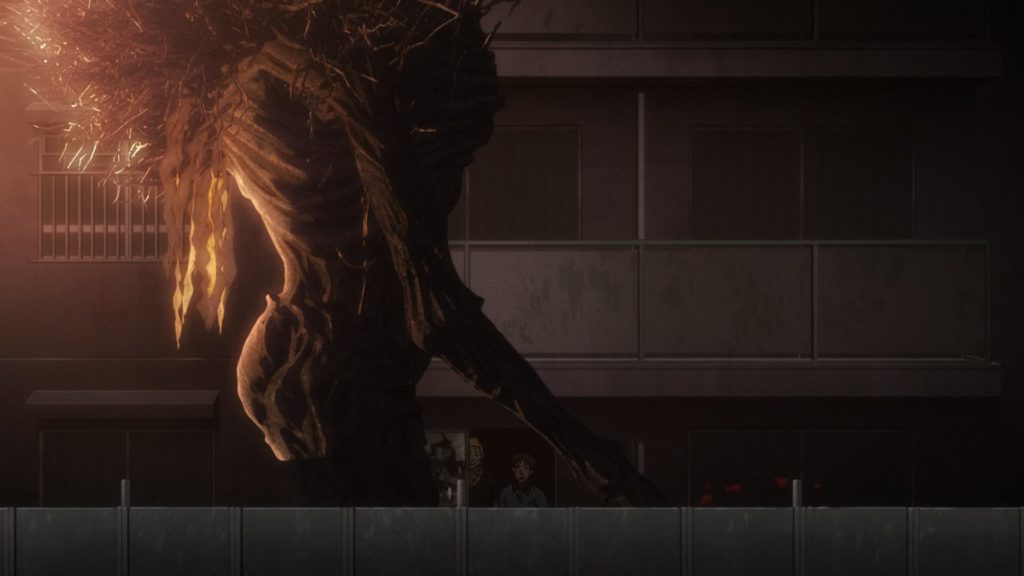
The most important of these elements is the Heralds, or Handlers as they are also called: giant floating titans made out of dust that act as the protectors of the Stalled, the ordinary people who are not able to move in Stasis, and are at the mercy of those who can. A lot of the show’s big reveals involve just what these things are and where they come from, as they form the main distraction from the show’s main plotline of Juri rescuing her family from the cult.
The Heralds are very enigmatic beings, often being treated as gods by the cult and they work really well early on in the story as it’s not clear what they are, and as a viewer you’re trying to work it out at the same time as the characters. As well as giving us some more gory moments when they rip people’s heads off, they offer some more poignant ones as well, building up one of the side characters, Shoko Majima, as perhaps the strongest of the cast, as her story and her relation to the Heralds is revealed.
While a lot of the cast aren’t likeable at first, one of the show’s strengths is that it can develop them into something more, with most of them going through some major changes as the series goes on. While there is a major focus on Juri and Majima, it also allows side characters, like Juri’s father and brother, to show different sides of themselves, with the former proving himself strong in a fight, and the latter finding some new motivation in his life in guiding his nephew down the right path. This is in stark contrast to their uselessness at the beginning of the series, where they just cause an endless amount of problems. This also offers a good opportunity for the series to inject its own brand of slightly sarcastic humour as Takafumi brings along a lot of comic relief, particularly in his interactions with Makoto and trying to make himself out to be better than he actually is.
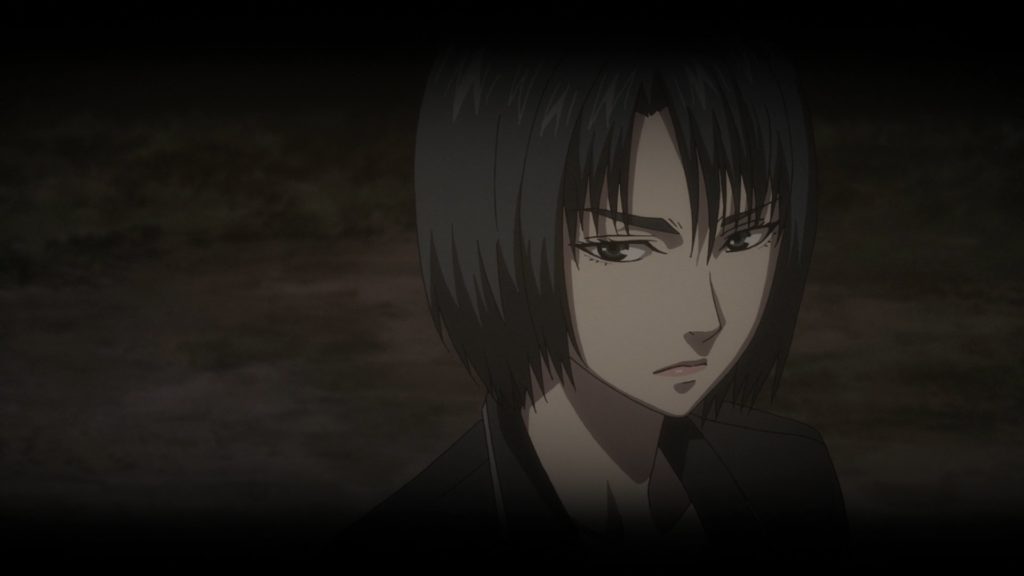
There are a couple of characters it neglects, though, with the family’s grandfather only ever amounting to a vehicle thanks to his teleportation power, while Sagawa’s henchman Shiomi is easy to read, as he clearly gravitates towards the winning side. There’s also one character who is invented just as a particular plot device in order to get one of the main characters out of a sticky situation, which I felt could have been handled better by integrating them more into the story from the start.
It is however particularly clever in where it places characters throughout the story as it uses Juri’s family members to lead her from place to place in order to advance the plot. It definitely makes telling the story more convenient, as it offers good transition points from plot thread to plot thread, becoming particularly effective around two thirds of the way in after the resolution of Majima’s arc. While everything could have wrapped up in that moment, there was still one person out of place, which just so happened to be where Sagawa was. It is a somewhat forceful technique and I am conflicted about how it uses it, but in the end it does what it needs to do to get the right characters together to start moving things towards a conclusion.
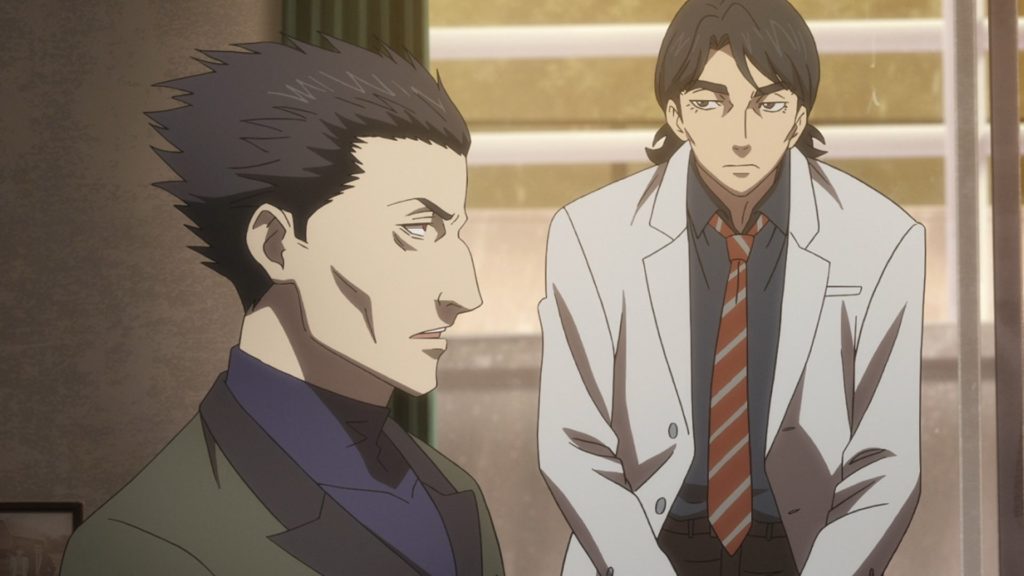
Sadly, this is where things start to go downhill as it takes a rather weird direction in its last couple of episodes, struggling to find a clean way to finish things with all of the main characters intact. This ends up leaving some gaping plot holes and contradictions in aspects of the world it established earlier, and feels like a cheap and easy way out, instead of reflecting on the consequences of meddling with time, something that Juri makes a pointed statement about early on. Ultimately some of its more supernatural elements get in the way, dragging things out when it could have wrapped things up more neatly and earlier without them.
In terms of its art and animation, Kokkoku isn’t much of a looker on the surface, as the setting (a generic city at sunset) doesn’t give much to the imagination, with the majority of the show using brown hues. Instead, its artistic strength is in the contrast and interactions between the stationary, stalled background people and objects and those moving in Stasis, as it shows a rather believable application of physics to what the show explains as not completely stopped, but moving at an imperceptibly slow speed – so liquids, for example, can still move out of a container, while objects can be thrown but will lose momentum quickly before hanging in mid-air. The CG work, helmed by Samurai Pictures, is also excellently done, with the Heralds and their blue spectral counterparts particularly making an impact.
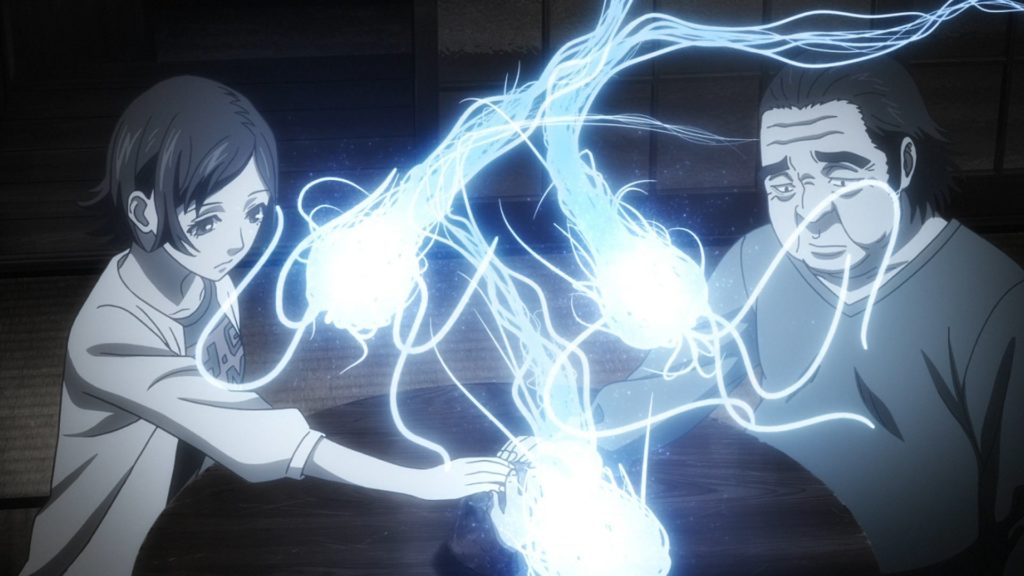
The soundtrack, composed by MICHIRU, is pretty good, and while it is generally full of slow, methodical piano and strings to match its mystery vibe, it’s not afraid of turning things up a notch with some very harsh sounds when things start going pear-shaped. What you will get hooked on though is the opening theme, “Flashback”, which I remember left KenKen’s catchy vocals and Miyavi’s distinctive slap-bass stuck in my head long after the show had originally finished airing.
Anime Limited’s release of the series features all 12 episodes on 2 discs with your usual extras (clean opening and ending, promos and trailers) as well as English dub audio and Japanese with subtitles. I couldn’t really fault either audio option; even with both using a mixture of more accomplished and slightly fresher-faced voice actors, they both sounded fine.

Overall, I definitely found Kokkoku: Moment by Moment to be one of the weirder anime series that I have seen. I liked its mystery vibes and its supernatural-tinted look at time and science fiction, particularly with the Heralds, yet I found it couldn’t really execute it well enough due to its pacing issues and its desire to pull out a satisfactory ending for every character when it really didn’t need to, going a bit off the ball in keeping its world and plot together at the end.


